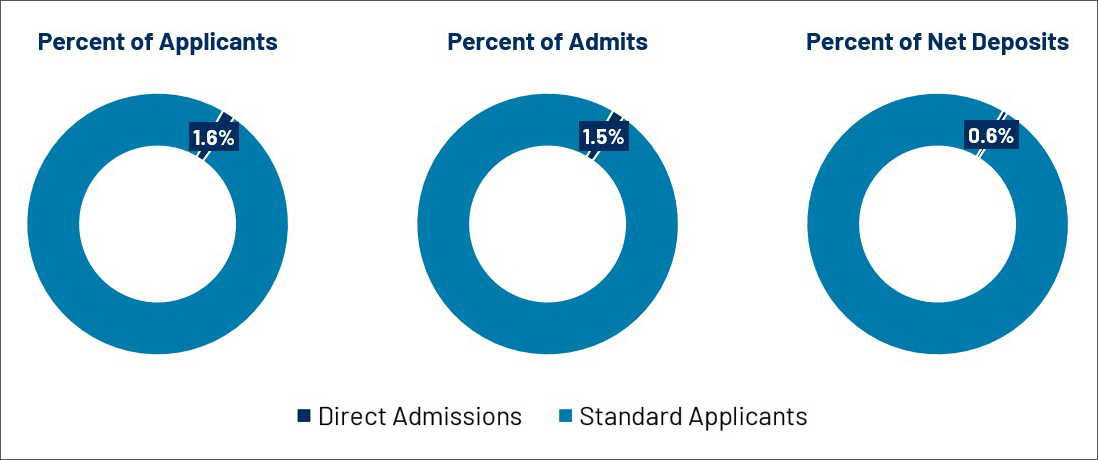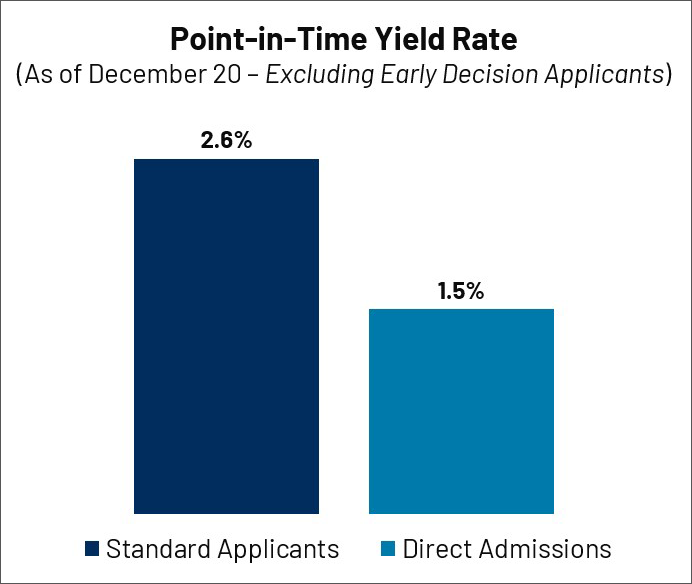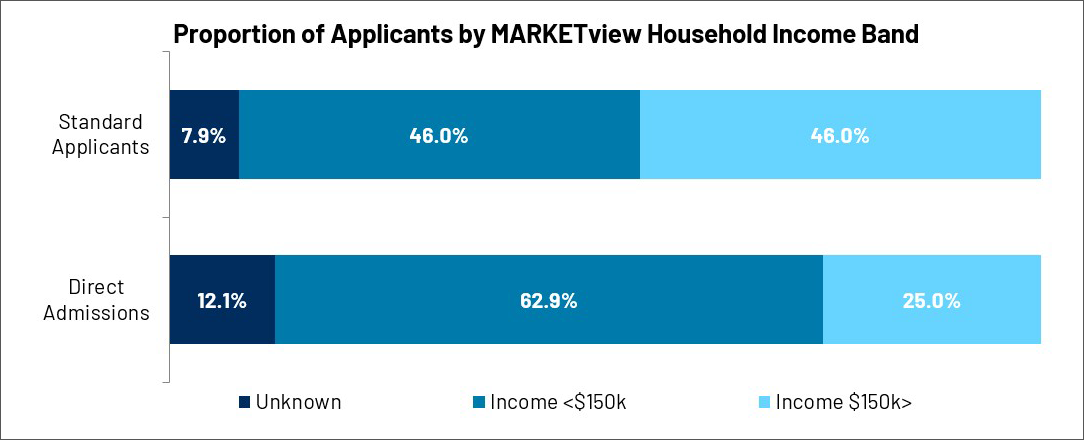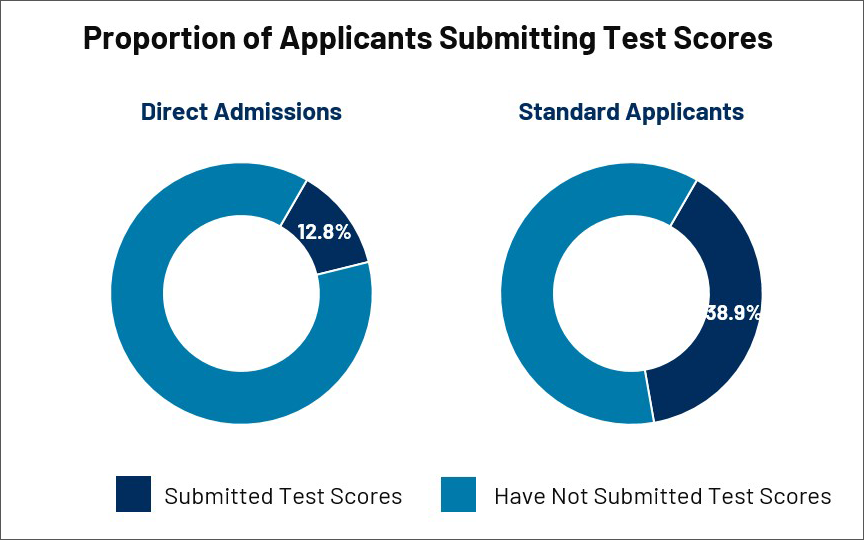A handful of MARKETview partners piloted Direct Admissions programs last cycle – either on their own or in partnership with an outside firm. But this year, more and more institutions have implemented Direct Admissions as a component of their overall enrollment strategy. Because of its growing adoption, MARKETview recently released the ability to monitor and analyze this population within the platform. Will Direct Admissions become a reliable source of enrollment or will the behavior of these students vary too much for comfort? This is what the MARKETview team is watching in real-time, and here’s a quick peek at what the early data is showing.
Before we dive in, it’s important to note that while Direct Admissions is now offered by nearly 20% of our partners, these students still make up only a fraction of the overall applicants (1.6%) and admits (1.5%) and even a smaller proportion of deposits (0.6%) as of December 20.

Trend #1: In These Early Days, Direct Admits Are Yielding at Lower Rates
As of December 20, students offered direct admission (excluding Early Decision applicants) are yielding at lower rates than traditional applicants – 1.5% compared to 2.6%, respectively. This difference in yield is intuitive since the students haven’t necessarily taken an action to express interest in the institution.

It’s early to report on yield, as this rate will continue to climb as we inch closer to the traditional season for depositing. However, the early gap in yield is not likely to disappear. For those who have implemented Direct Admissions programs, it’s important to be cognizant of the yield differential when creating yield models.
Trend #2: So Far, Students Offered Direct Admission Skew Less Affluent
Direct Admissions programs reduce the barriers in applying to college such as waiving the application fee, which can be particularly beneficial to low-income students. As of December 20, nearly 63% of direct admission offers were given to students from households earning less than $150,000 annually. In contrast, only 46% of standard applicants are from those less affluent households.

As is often the case, the offer of admission is only one part of the equation. These students are highly likely to require financial aid to attend, so the fact that most institutions have yet to award financial aid this cycle (due to the delayed launch of the FAFSA), likely contributes to the low yield we highlighted in Trend #1.
Trend #3: Students Offered Direct Admission Are Submitting Test Scores at Lower Rates
We know from our ongoing research on test submitters that the act of sending test scores is a strong show of interest. As of December 20, only 12.8% of students offered direct admission have submitted a test score compared to 38.9% of traditional applicants.

You may want to consider reviewing your communications flow to ensure consistency – regardless of whether the student is a direct admit or a standard applicant – and monitoring the behavior of submitters and non-submitters.
Interested in learning how MARKETview can help you optimize your enrollment strategy?

